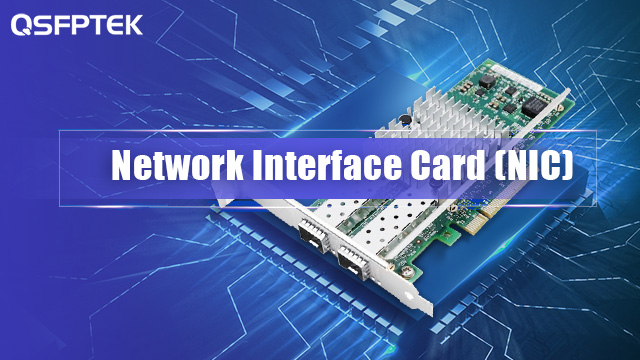140 Topics
Sort by:
-
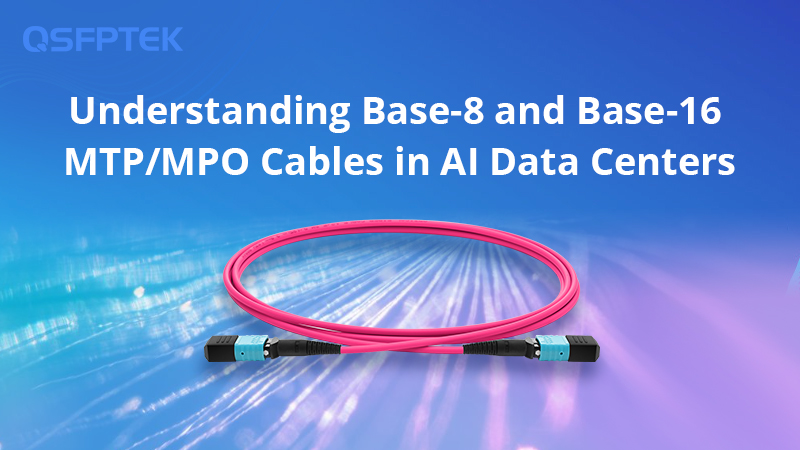 Understanding Base-8 and Base-16 MTP/MPO Cables in AI Data Centers
Understanding Base-8 and Base-16 MTP/MPO Cables in AI Data CentersMTP (Multi-fiber Termination Push-on) is a registered trademark of US Conec, Inc. It is essentially a high-performance MPO connector with an optimized design. MTP connectors are better than regular MPO connectors in a couple of ways. They've got better optical performance and a better mechanical structure, which makes for better transmission efficiency and stability.Moore 07/02/2025Read More >
Understanding Base-8 and Base-16 MTP/MPO Cables in AI Data Centers
Understanding Base-8 and Base-16 MTP/MPO Cables in AI Data CentersMTP (Multi-fiber Termination Push-on) is a registered trademark of US Conec, Inc. It is essentially a high-performance MPO connector with an optimized design. MTP connectors are better than regular MPO connectors in a couple of ways. They've got better optical performance and a better mechanical structure, which makes for better transmission efficiency and stability.Moore 07/02/2025Read More > -
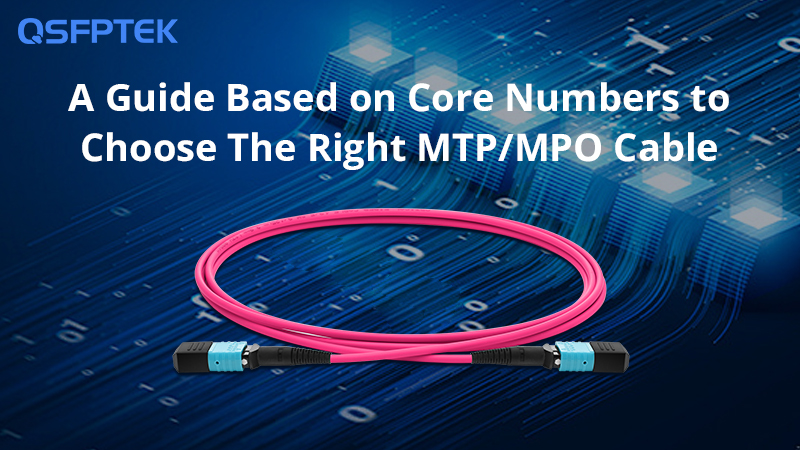 A Guide Based on Core Numbers to Choose The Right MTP/MPO Cable
A Guide Based on Core Numbers to Choose The Right MTP/MPO CableMTP/MPO cables are a class of high-density multi-core fiber optic connectivity solutions widely used in data centers and telecom networks, which are designed to achieve fast connection of multi-core fiber optics through a single interface.Moore 06/16/2025Read More >
A Guide Based on Core Numbers to Choose The Right MTP/MPO Cable
A Guide Based on Core Numbers to Choose The Right MTP/MPO CableMTP/MPO cables are a class of high-density multi-core fiber optic connectivity solutions widely used in data centers and telecom networks, which are designed to achieve fast connection of multi-core fiber optics through a single interface.Moore 06/16/2025Read More > -
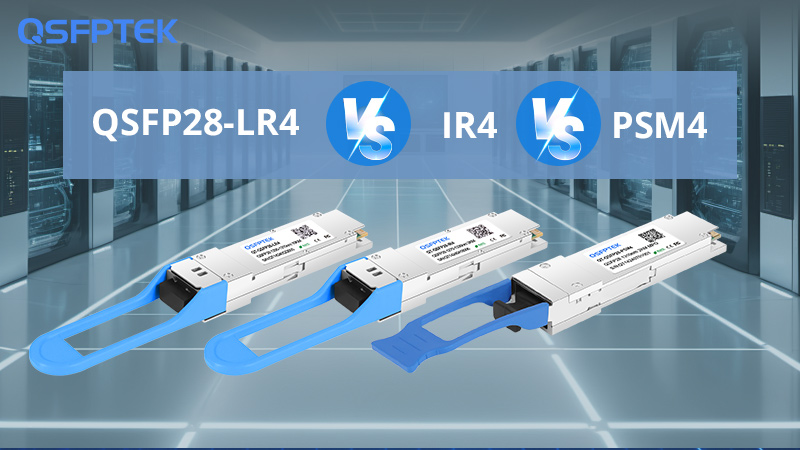 QSFP28 100GBASE LR4 vs CWDM4 vs PSM4 Single-Mode DCI Solutions
QSFP28 100GBASE LR4 vs CWDM4 vs PSM4 Single-Mode DCI Solutions100G CWDM4, 100G LR4 and 100G PSM4 are three single-mode QSFP28 standards: What are their common and distinct features? This post will cover every aspect of their working principle, specifications, technology, optical components, cable solutions, cost, etc.Moore 05/30/2025Read More >
QSFP28 100GBASE LR4 vs CWDM4 vs PSM4 Single-Mode DCI Solutions
QSFP28 100GBASE LR4 vs CWDM4 vs PSM4 Single-Mode DCI Solutions100G CWDM4, 100G LR4 and 100G PSM4 are three single-mode QSFP28 standards: What are their common and distinct features? This post will cover every aspect of their working principle, specifications, technology, optical components, cable solutions, cost, etc.Moore 05/30/2025Read More > -
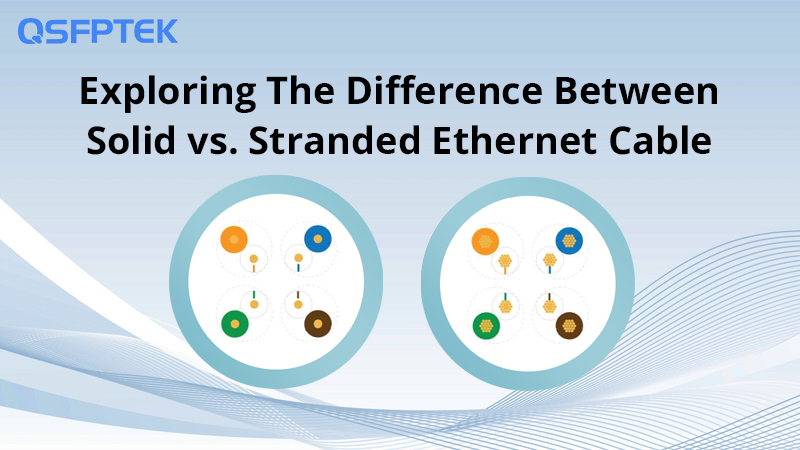 Solid vs. Stranded Ethernet Cable, How to Choose?
Solid vs. Stranded Ethernet Cable, How to Choose?Solid conductor cables consist of a single copper conductor, usually between 22 and 24 AWG (American Wire Gauge) in diameter. The solid cables are usually made of bare copper. This article will explain the difference between solid vs. stranded Ethernet cable.Moore 05/26/2025Read More >
Solid vs. Stranded Ethernet Cable, How to Choose?
Solid vs. Stranded Ethernet Cable, How to Choose?Solid conductor cables consist of a single copper conductor, usually between 22 and 24 AWG (American Wire Gauge) in diameter. The solid cables are usually made of bare copper. This article will explain the difference between solid vs. stranded Ethernet cable.Moore 05/26/2025Read More > -
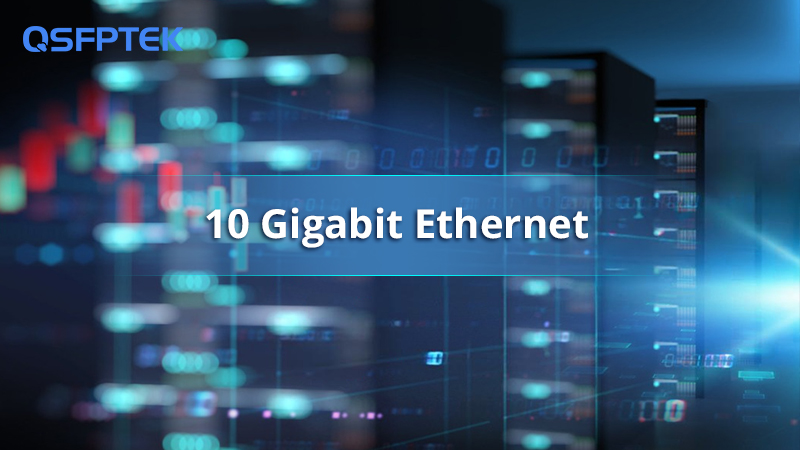 What is 10 Gigabit Ethernet?
What is 10 Gigabit Ethernet?10 Gigabit Ethernet (10 GbE) is a high-speed Ethernet technology with a transmission speed of 10 gigabits per second (10 Gbps). Also known as 10GE or 10 GigE since it was first introduced in 2002.Moore 05/19/2025Read More >
What is 10 Gigabit Ethernet?
What is 10 Gigabit Ethernet?10 Gigabit Ethernet (10 GbE) is a high-speed Ethernet technology with a transmission speed of 10 gigabits per second (10 Gbps). Also known as 10GE or 10 GigE since it was first introduced in 2002.Moore 05/19/2025Read More > -
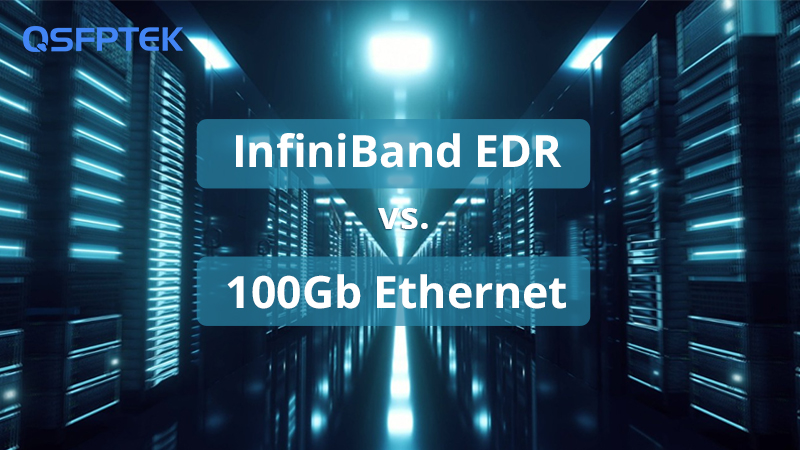 Exploring The Difference Between InfiniBand EDR vs. 100Gb Ethernet
Exploring The Difference Between InfiniBand EDR vs. 100Gb EthernetInfiniBand EDR is a network interconnection technology designed for high-performance computing environments. The performance and architectural differences between InfiniBand EDR and 100Gb Ethernet are described in this article, along with the technical characteristics and RDMA implementations of both solutions, and application scenarios.Moore 04/30/2025Read More >
Exploring The Difference Between InfiniBand EDR vs. 100Gb Ethernet
Exploring The Difference Between InfiniBand EDR vs. 100Gb EthernetInfiniBand EDR is a network interconnection technology designed for high-performance computing environments. The performance and architectural differences between InfiniBand EDR and 100Gb Ethernet are described in this article, along with the technical characteristics and RDMA implementations of both solutions, and application scenarios.Moore 04/30/2025Read More > -
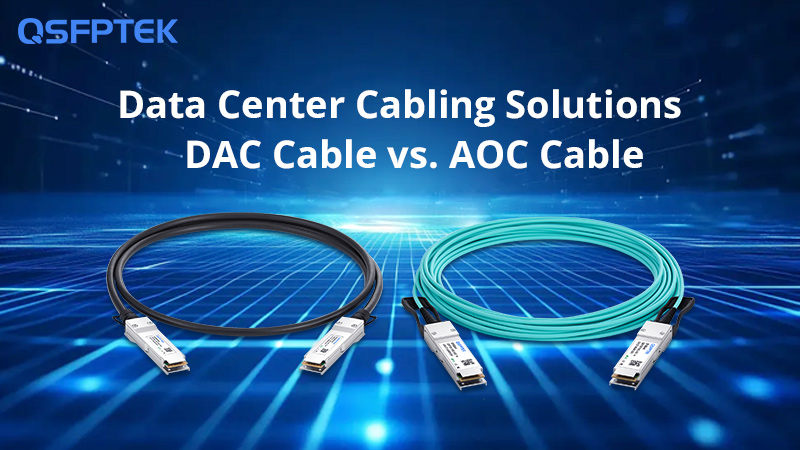 DAC Cable vs. AOC Cable: Data Center Cabling Solutions Guide
DAC Cable vs. AOC Cable: Data Center Cabling Solutions GuideDAC and AOC cables are widely used in high-performance computing networks' cabling systems due to their low latency, low power consumption, and relatively controllable cost advantages in the high-speed interconnection scenario of data centers. Compared with the traditional combination of optical modules and patch cords, these two types of cables provide a simpler and efficient solution.Moore 04/18/2025Read More >
DAC Cable vs. AOC Cable: Data Center Cabling Solutions Guide
DAC Cable vs. AOC Cable: Data Center Cabling Solutions GuideDAC and AOC cables are widely used in high-performance computing networks' cabling systems due to their low latency, low power consumption, and relatively controllable cost advantages in the high-speed interconnection scenario of data centers. Compared with the traditional combination of optical modules and patch cords, these two types of cables provide a simpler and efficient solution.Moore 04/18/2025Read More > -
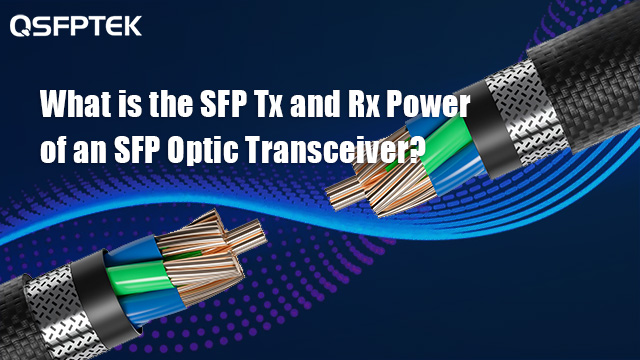 What is the Tx and Rx Power of an SFP Optical Transceiver?
What is the Tx and Rx Power of an SFP Optical Transceiver?In a fiber link, the Rx/Tx power of an optical module is sufficient to ensure the stable operation of the fiber link. Do you know the Tx and Rx power of an optical module? How should it be calculated? This article will show you how to calculate an optical module's Tx and Rx power in detail.Moore 04/11/2025Read More >
What is the Tx and Rx Power of an SFP Optical Transceiver?
What is the Tx and Rx Power of an SFP Optical Transceiver?In a fiber link, the Rx/Tx power of an optical module is sufficient to ensure the stable operation of the fiber link. Do you know the Tx and Rx power of an optical module? How should it be calculated? This article will show you how to calculate an optical module's Tx and Rx power in detail.Moore 04/11/2025Read More > -
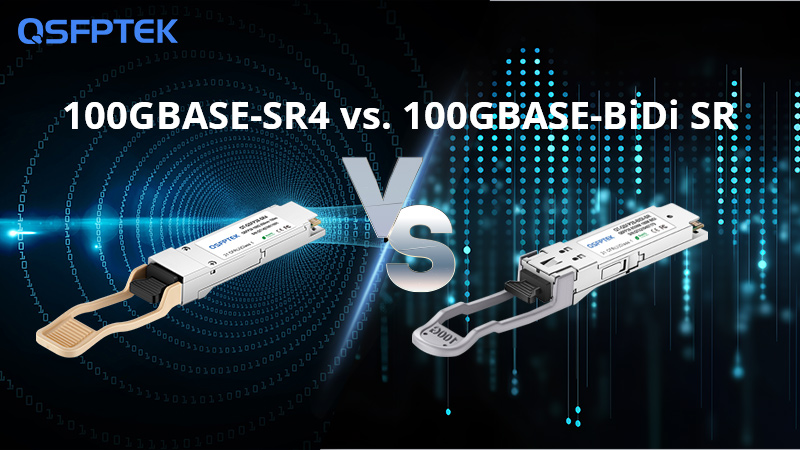 100GBASE-SR4 and 100GBASE-BiDi SR Comprehensive Guide: Understanding QSFP28 SR Transceivers
100GBASE-SR4 and 100GBASE-BiDi SR Comprehensive Guide: Understanding QSFP28 SR TransceiversThis article takes an in-depth look at the pros and cons of 100GBASE SR4 and 100GBASE BIDI SR, as well as their unique applications in data center environments, to help you gain a deeper understanding and make a selection based on your needs.Moore 04/03/2025Read More >
100GBASE-SR4 and 100GBASE-BiDi SR Comprehensive Guide: Understanding QSFP28 SR Transceivers
100GBASE-SR4 and 100GBASE-BiDi SR Comprehensive Guide: Understanding QSFP28 SR TransceiversThis article takes an in-depth look at the pros and cons of 100GBASE SR4 and 100GBASE BIDI SR, as well as their unique applications in data center environments, to help you gain a deeper understanding and make a selection based on your needs.Moore 04/03/2025Read More > -
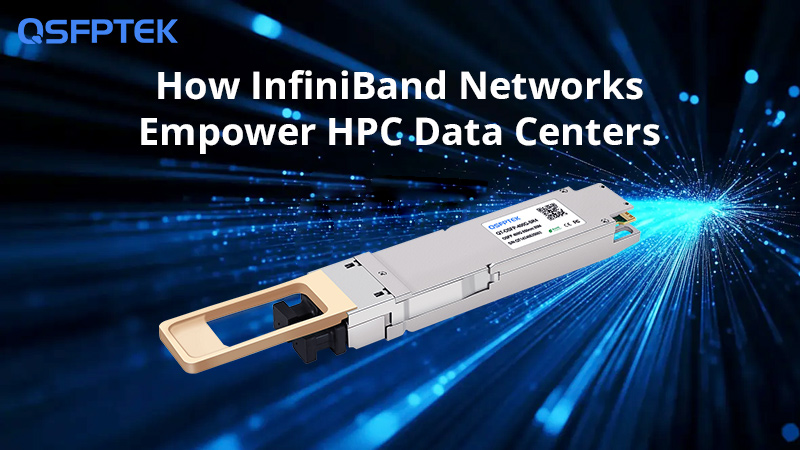 How InfiniBand Networks Empower HPC Data Centers
How InfiniBand Networks Empower HPC Data CentersInfiniBand is an open-standard high-speed network interconnect technology with high bandwidth, low latency, and high reliability widely used in supercomputer clusters. Its primary role is to connect data switches while providing efficient data transfer channels within the data center and between storage systems.Moore 04/02/2025Read More >
How InfiniBand Networks Empower HPC Data Centers
How InfiniBand Networks Empower HPC Data CentersInfiniBand is an open-standard high-speed network interconnect technology with high bandwidth, low latency, and high reliability widely used in supercomputer clusters. Its primary role is to connect data switches while providing efficient data transfer channels within the data center and between storage systems.Moore 04/02/2025Read More >
first
flipPage
last





